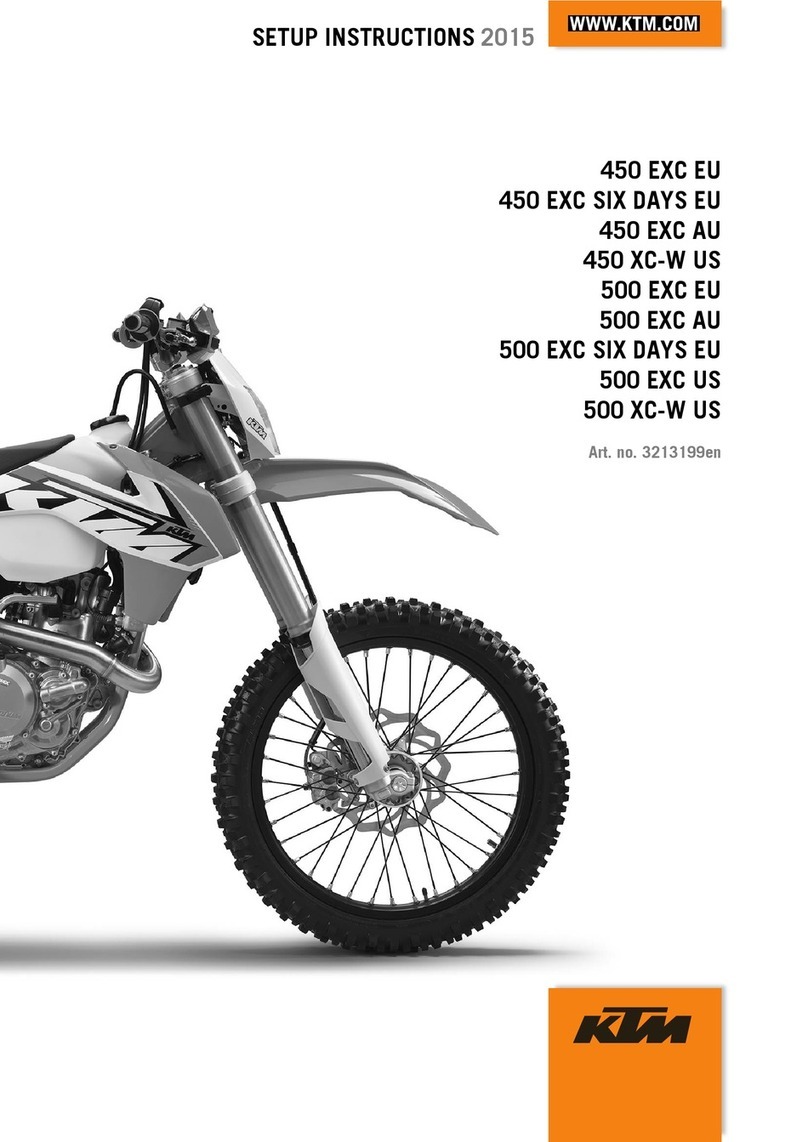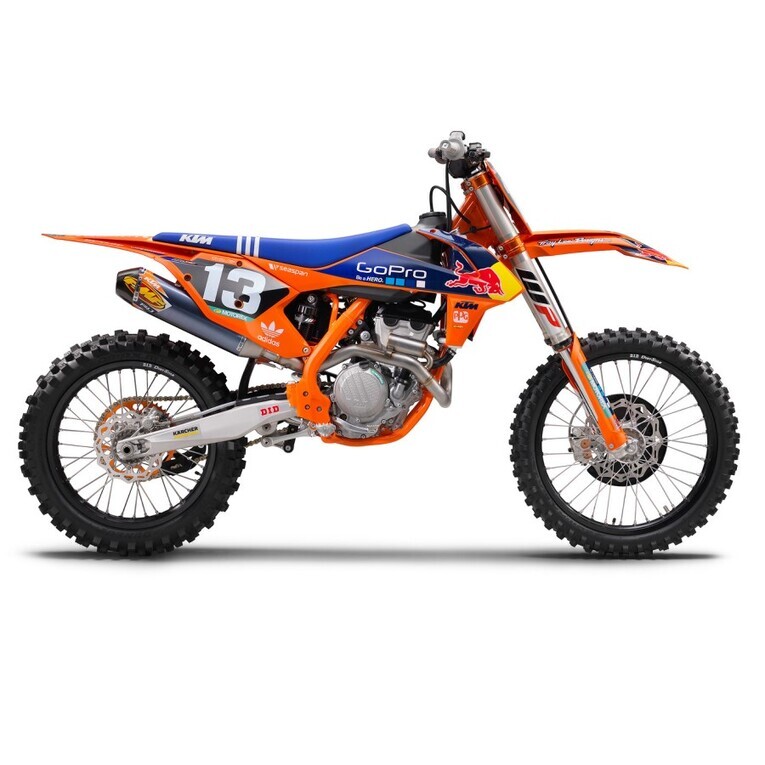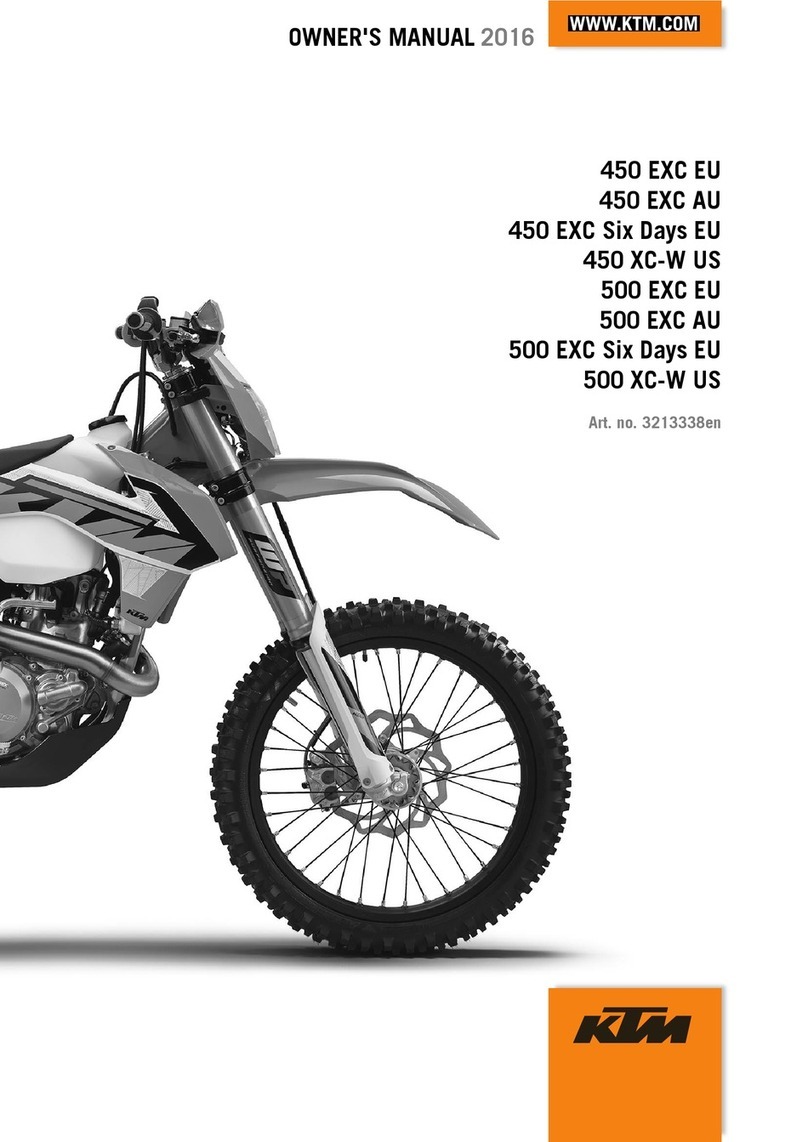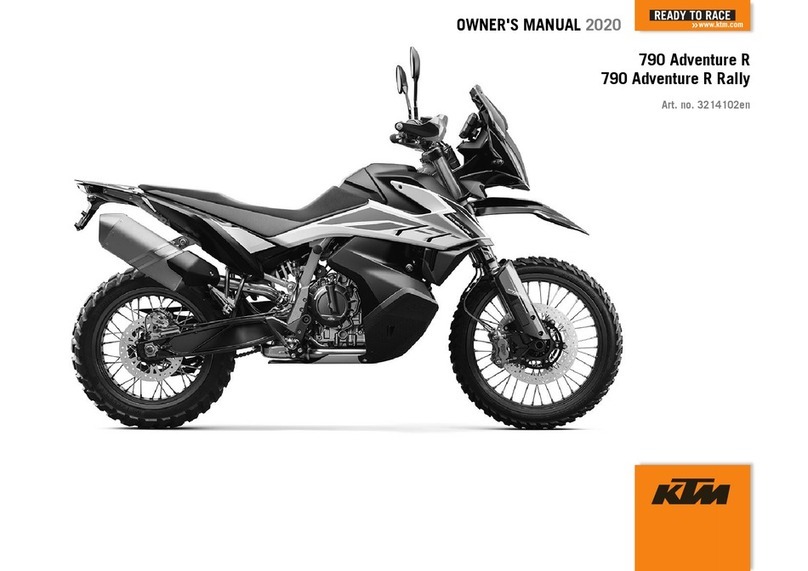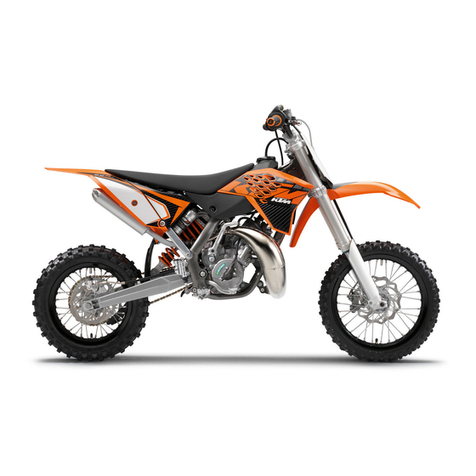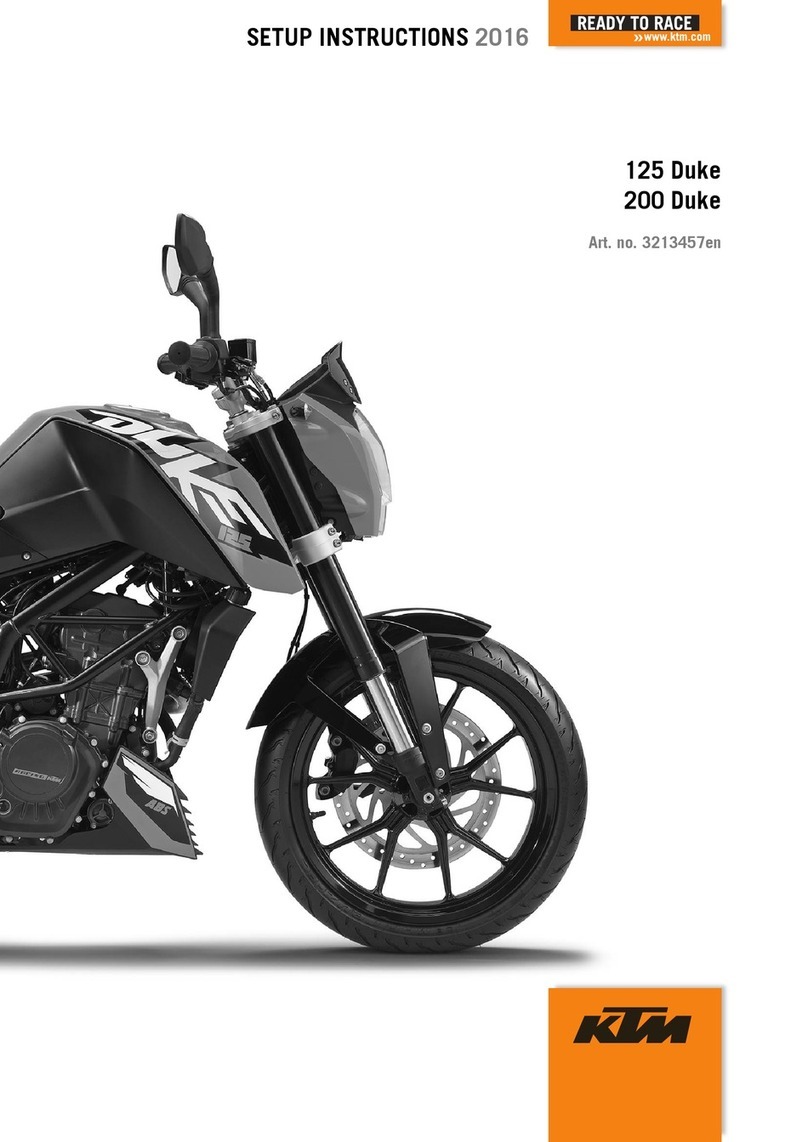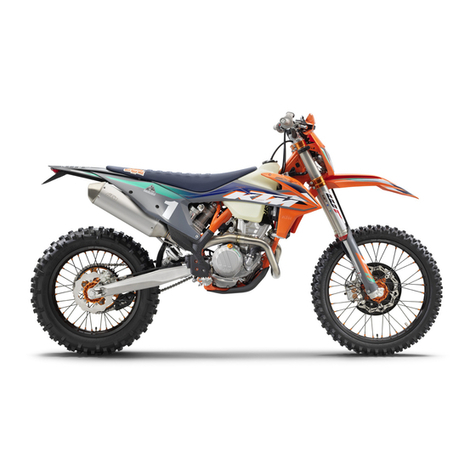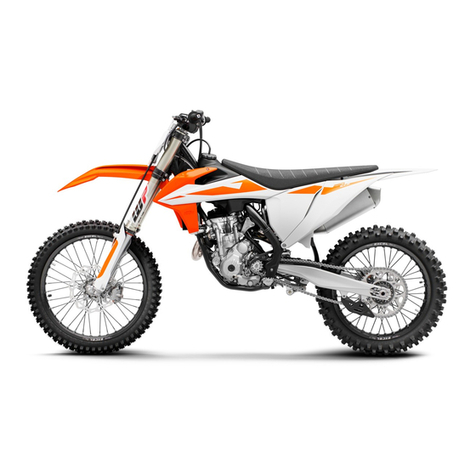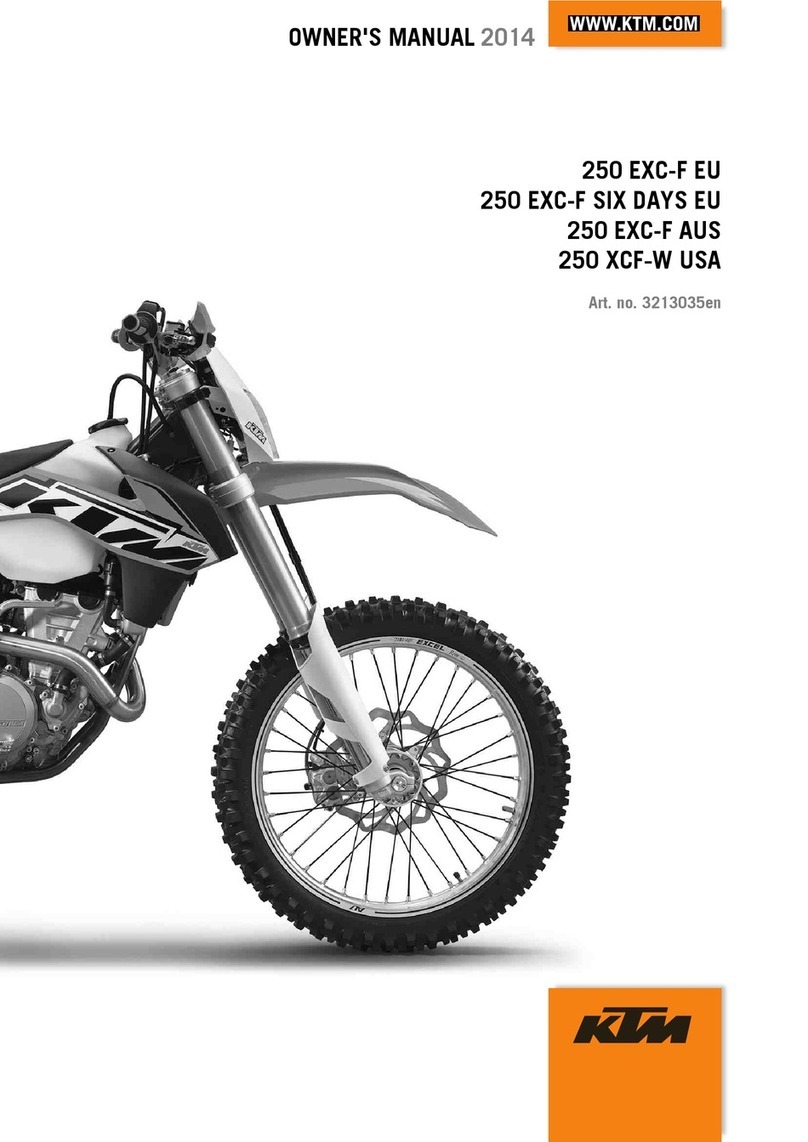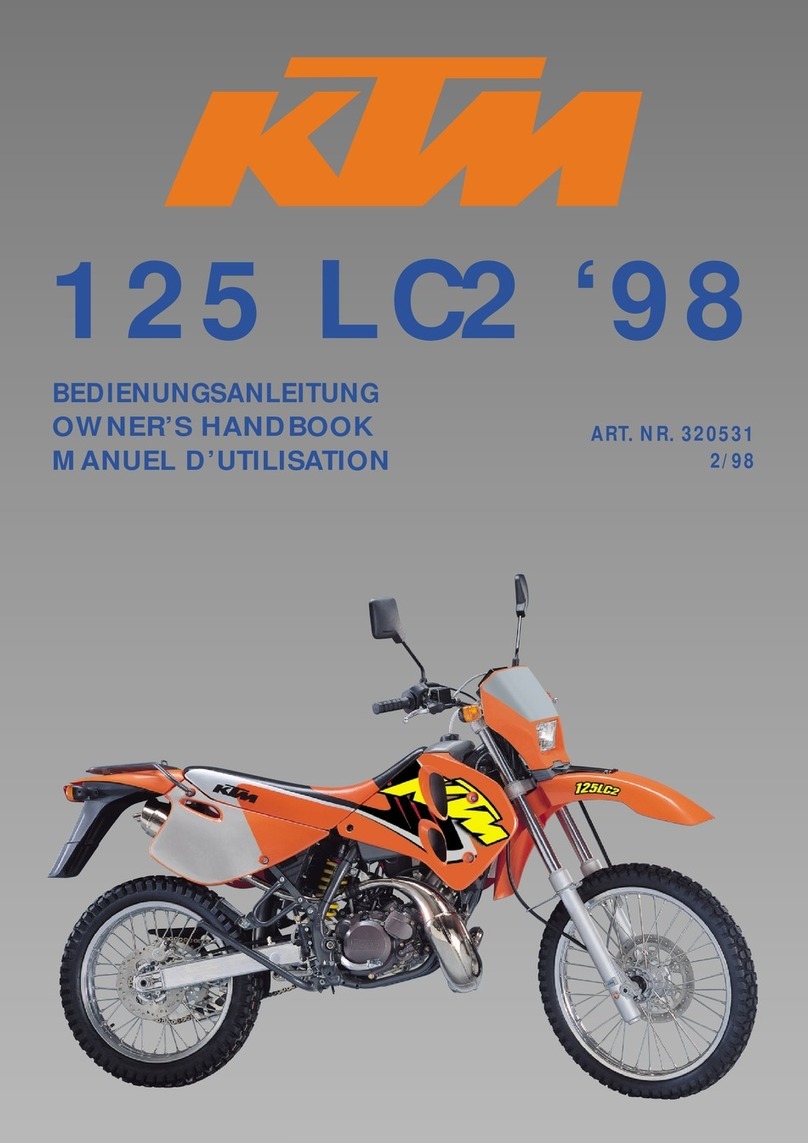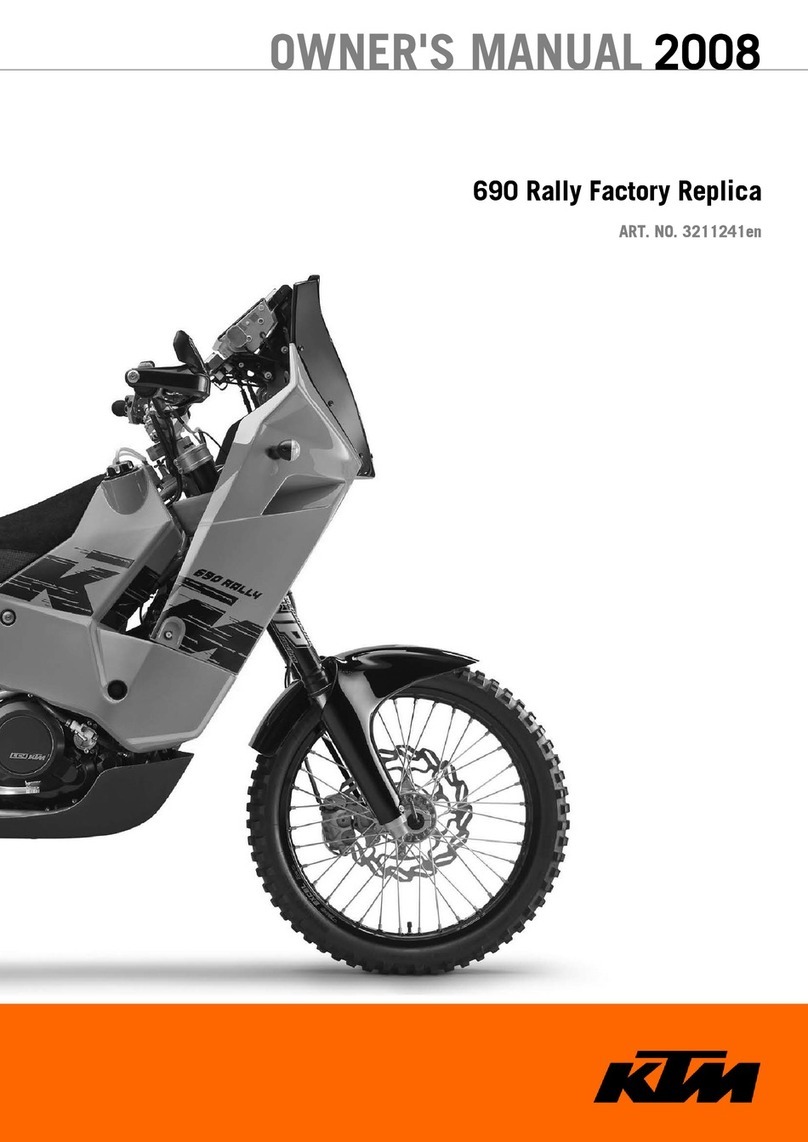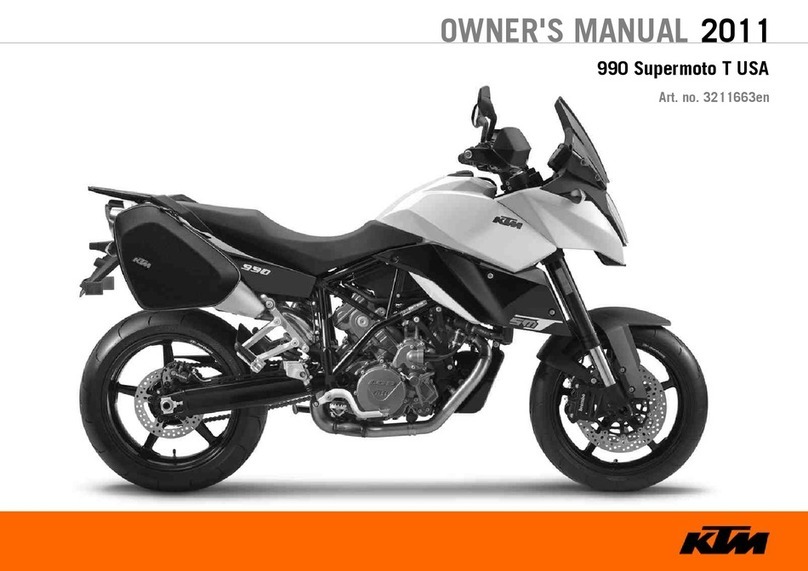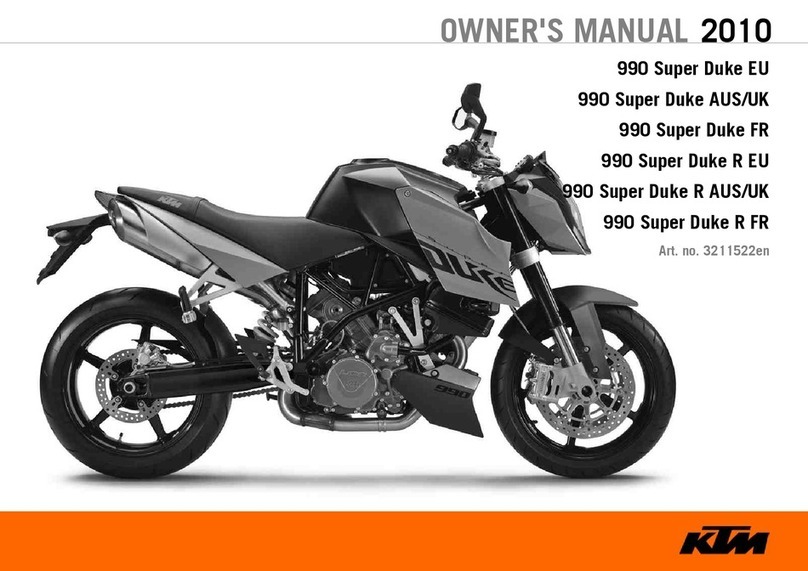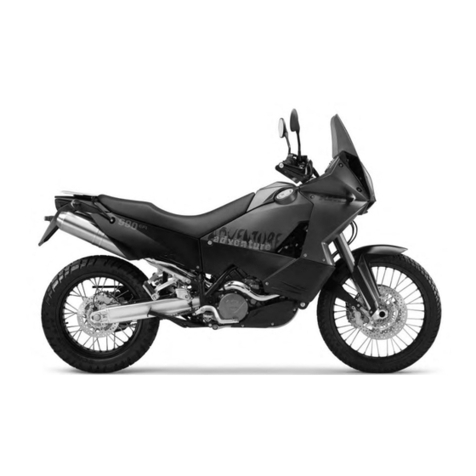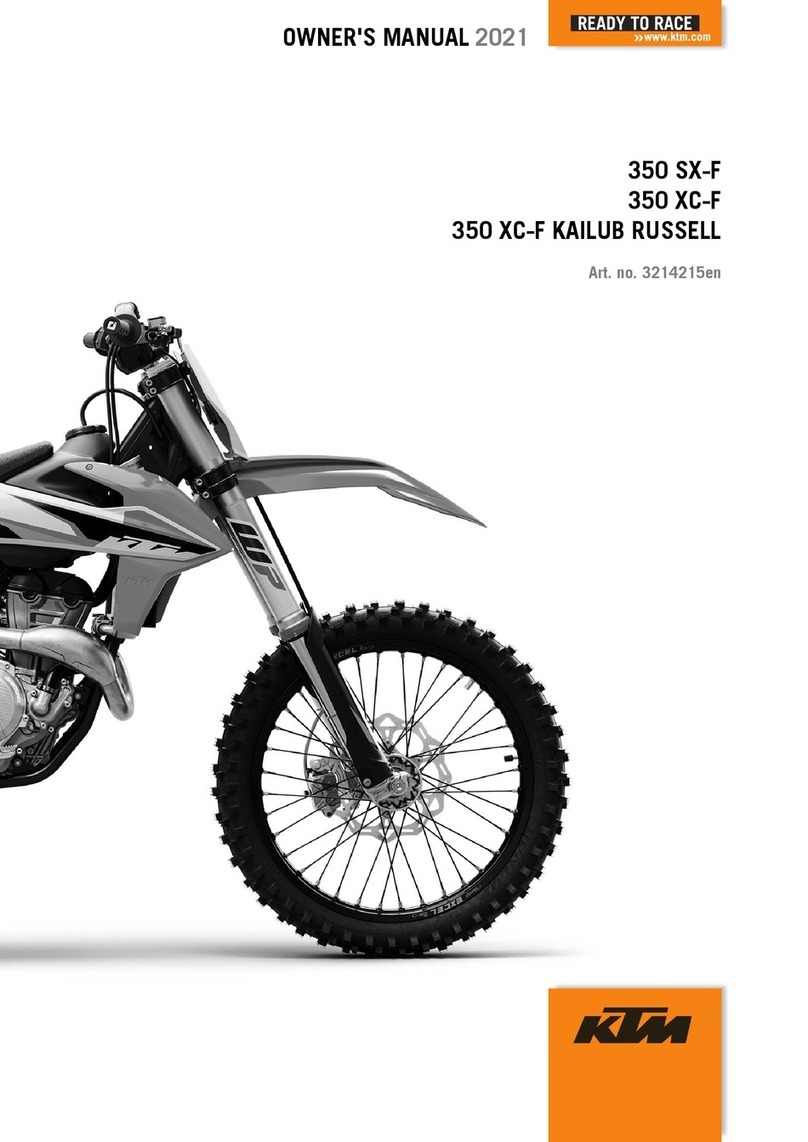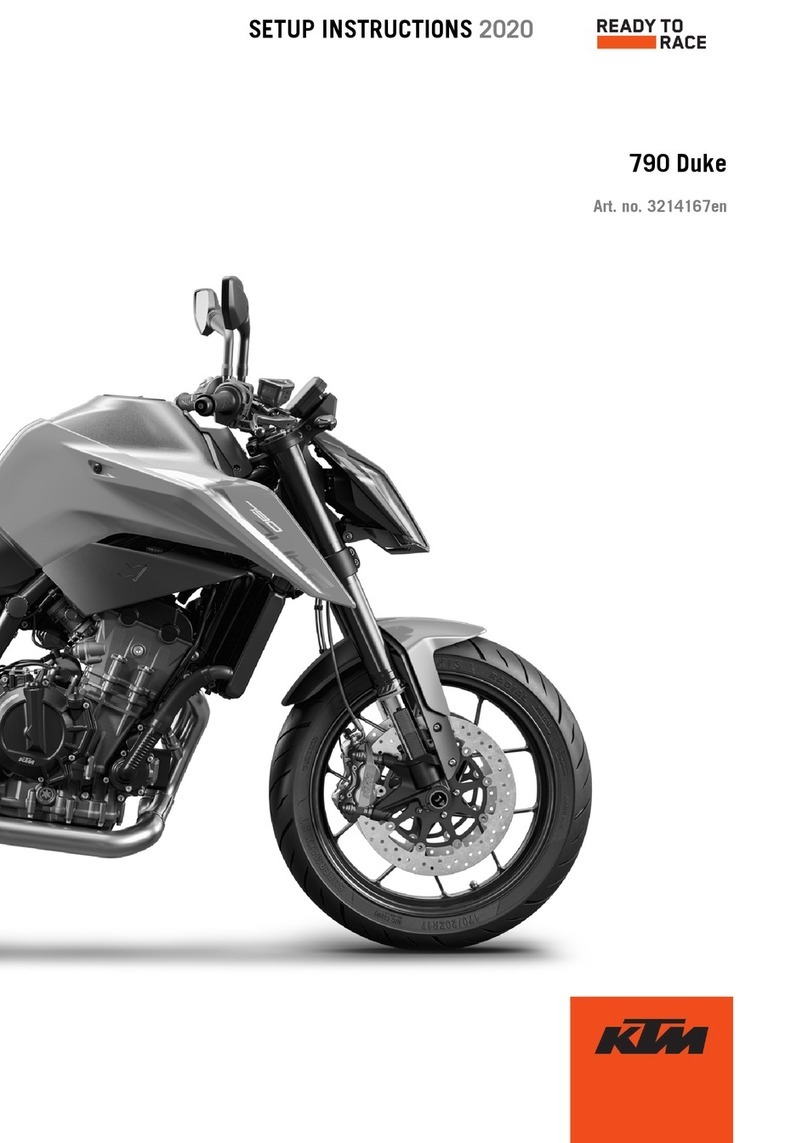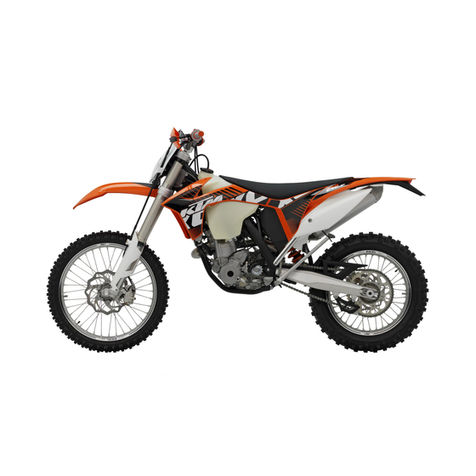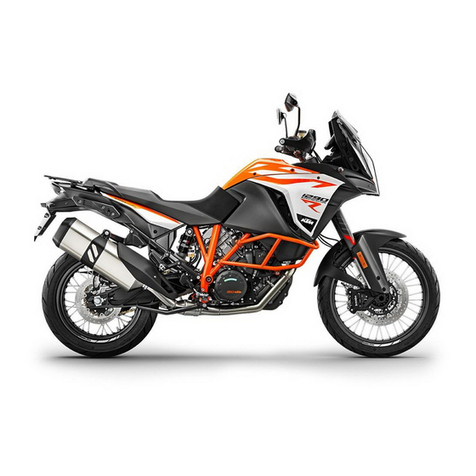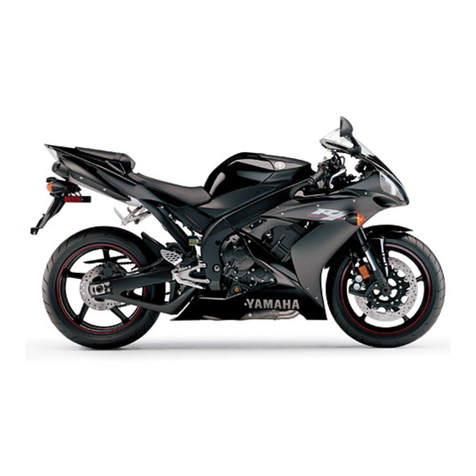
3 WORK 7
Info
Even when there is no load on the battery, it discharges steadily.
The charging level and the method of charging are very important for the service life of the battery.
Rapid recharging with a high charging current shortens the service life of the battery.
If the charging current, charging voltage, and charging time are exceeded, the battery will be destroyed.
If the battery is depleted from starting the vehicle repeatedly, the battery must be charged immediately.
If the battery is left in a discharged state for an extended period, it will become over-discharged and sulfated, destroying the
battery.
The battery is maintenance-free, i.e., the acid level does not have to be checked.
Preparatory work
–Switch off the ignition by turning the black ignition key to the position OFF .
–Remove the seat. ( p. 6)
–Remove the battery. ( p. 7)
311910-10
Main work
–Connect the battery charger to the battery. Set the battery charger.
Alternative 1
Battery charger XCharge-professional EU (00029095050)
Alternative 2
Battery charger XCharge-professional US (00029095051)
Alternative 3
Battery charger XCharge-professional GB (00029095052)
Alternative 4
Battery charger XCharge-professional CH (00029095053)
Info
Follow the instructions of the charger and the manual.
–Disconnect the battery charger after charging the battery.
Guideline
The charging current, charging voltage, and charging time must not be exceeded.
Charge the battery regularly when the
motorcycle is not in use
3 months
Finishing work
–Install the battery. ( p. 8)
–Mount the seat. ( p. 6)
–Set the time and date.
3.5 Removing the battery
Warning
Risk of injury Battery acid and battery gases cause serious chemical burns.
–Keep batteries out of the reach of children.
–Wear suitable protective clothing and safety glasses.
–Avoid contact with battery acid and battery gases.
–Keep sparks or open flames away from the battery.
–Only charge batteries in well-ventilated rooms.
–Rinse the affected area immediately with plenty of water in the event of contact with the skin.
–Rinse eyes with water for at least 15 minutes and consult a doctor immediately if battery acid and battery gases get into
the eyes.
Caution
Danger of accidents Electronic components and safety devices will be damaged if the battery is discharged or missing.
–Never operate the vehicle with a discharged battery or without a battery.
